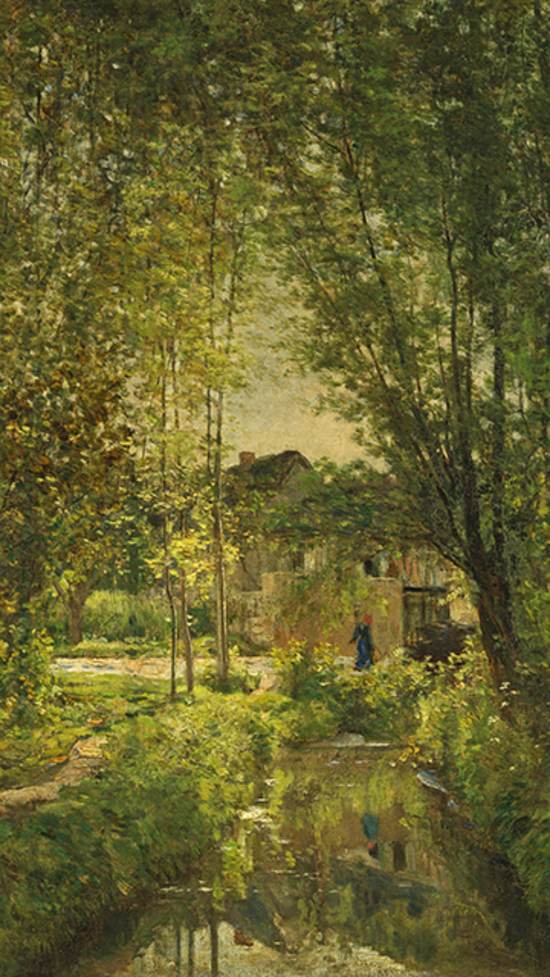
杜比尼於 1838 年開始定期在沙龍展出他的作品,到 1850 年代初期,他成為相當成功的風景畫家。水在他的畫作中佔有重要地位——尤其是在他從平常作畫的船上所繪製的河景。
Daubigny began exhibiting his work regularly at the Salon in 1838, and by the early 1850s he had achieved considerable success as a landscape painter. Water figures prominently in his imagery—notably, in his riverscapes painted from the vantage point of his studio-boat.

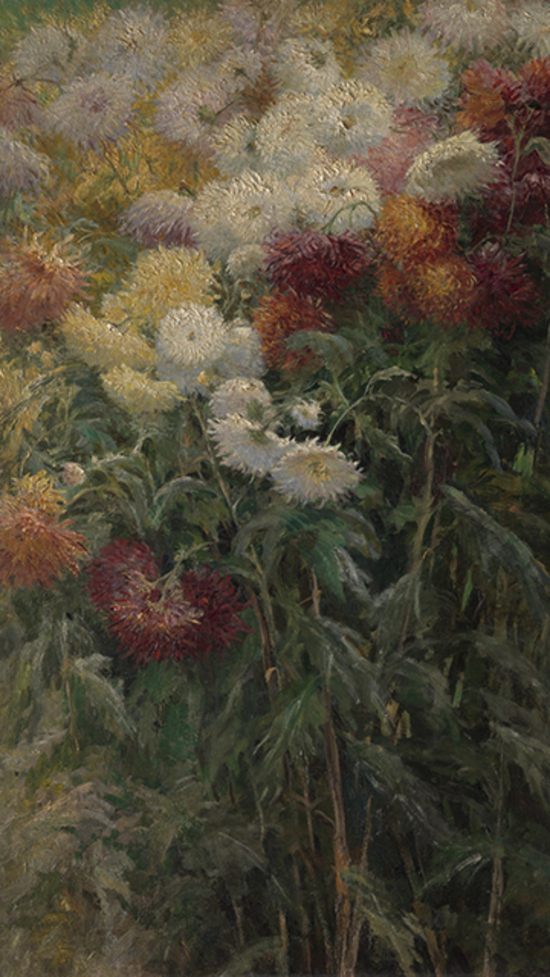
卡耶伯特直到 1880 年代才開始發展對花卉主題的興趣。這幅 1893 年的作品描繪了他在巴黎西北部塞納河畔的小鎮所種植的花卉。菊花在法國非常受歡迎,以其絢麗的色彩和與東亞的聯想而聞名,而東亞的藝術和文化深受歐洲人的欽佩。這種獨特、密集的花朵特寫與卡耶伯特的餐廳門系列作品有關,該系列裝飾有植物圖像——概念類似莫內在吉維尼花園中設計的裝飾系列。
Although Caillebotte was a lifelong gardener, his interest in floral subjects did not develop until the 1880s. This work of 1893 depicts flowers that he cultivated on his property at Petit-Gennevilliers, a small town on the Seine just northwest of Paris. Chrysanthemums were hugely popular in France, celebrated for their resplendent colors and associations with East Asia, whose arts and cultures were greatly admired by Europeans. This unusual, close-up view of densely packed blossoms has been related to Caillebotte’s project for dining room doors ornamented with images of plants—a conception akin to the decorative series that his friend Monet based on his own garden at Giverny.

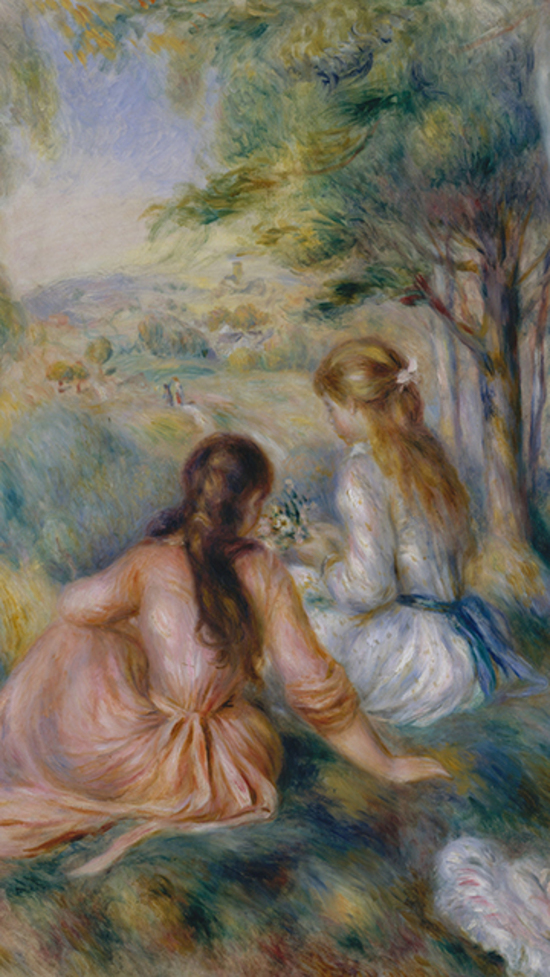
1888 年至 1892 年間,雷諾瓦畫了許多同對女孩的作品——金發女郎穿著白色連衣裙,黑髮女郎穿著粉色連衣裙,她們採花、悠閒的消遣。博物館中Lehman收藏系列(1975.1.201)也出現同樣的主角。 這些青春純真的繪畫種類在 1890 年代初期受到市場青睞。
Between 1888 and 1892 Renoir painted a number of works in which the same pair of girls—the blonde wearing a white frock and the brunette a pink one—engage in leisurely pastimes. Here, they pick flowers; the same models appear at the piano in a painting now in the Museum's Lehman Collection (1975.1.201). These intimate genre scenes, which celebrate youthful innocence, found a ready market in the early 1890s.

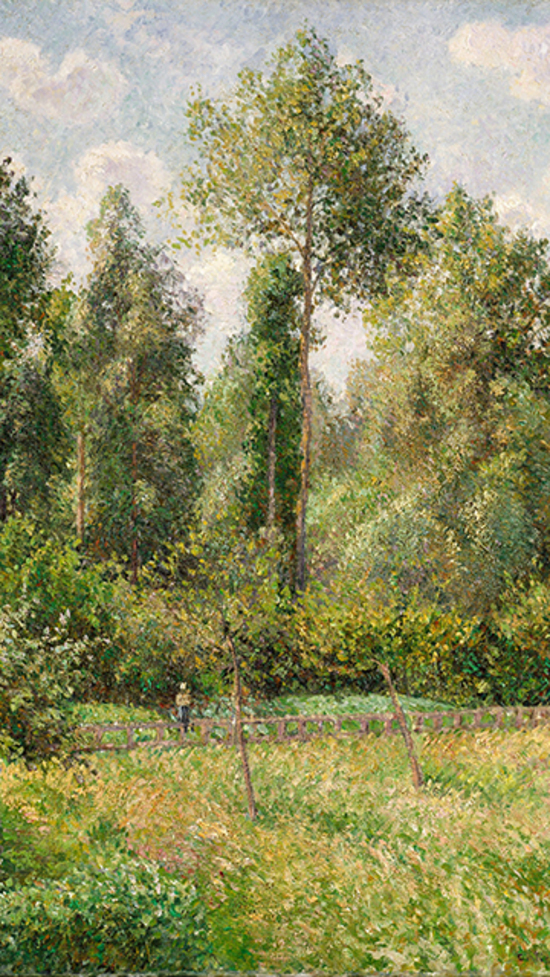
這幅 1895 年夏天的畫作展示了畢沙羅的花園一隅,該花園位於法國北部的一個小村莊,他從 1884 年到逝世前都住在這裡。畢沙羅很可能是從他工作室窗戶的視角所繪製,因為眼疾的持續發作阻礙了他在戶外創作。 這幅畫是畢沙羅在當年11月賣給經銷商杜蘭德.魯埃爾的作品之一,杜蘭德在次年春天將其於藝術家作品的大型展覽中展出。
This canvas of summer 1895 shows a corner of Pissarro's garden at Éragny, a small village in northern France where he lived from 1884 until his death. Pissarro likely painted this view from his studio window, as a persistent eye ailment hampered him from working outdoors. The picture was among the works that Pissarro sold in November to the dealer Durand-Ruel, who included it in a major exhibition of the artist’s work the following spring.

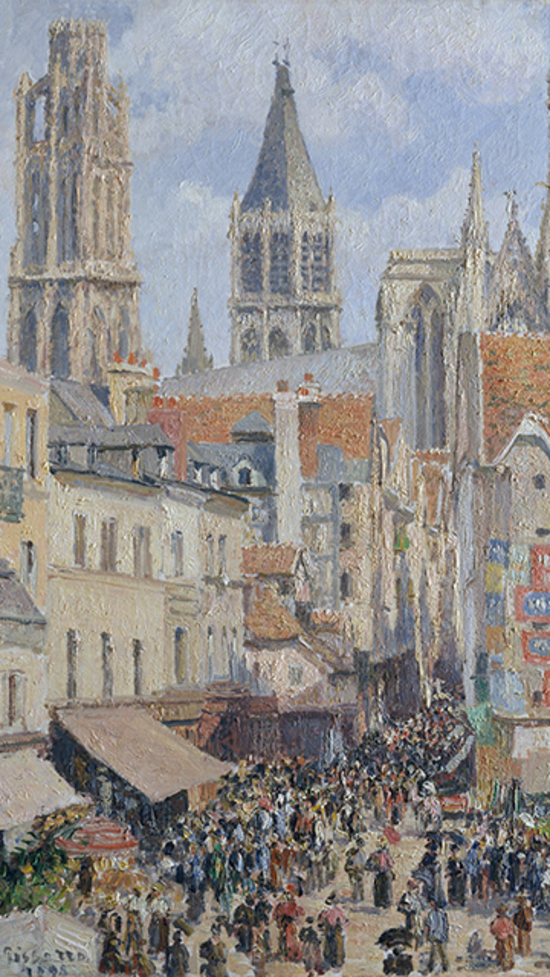
到 1898 年畢沙羅第四次訪問魯昂時,他已經非常熟悉魯昂的文化。這位藝術家描繪了他之前處理過的許多相同的城市景觀,但也發現了新的場景,比如這幅,8月19日,他寫信給兒子:「昨天我找到了一個很棒的地方,我可以畫出雜貨街甚至每週五固定營業的市場,一個非常有趣的地方。」畢沙羅將這個場景畫了三遍,但大都會館藏是唯一一張顯示市場非常熱鬧的畫作。
By the time of Pissarro’s fourth visit to Rouen in 1898, he was "already familiar with the motifs there." The artist depicted many of the same cityscapes that he had tackled previously, but also scouted out new scenes, such as this one. On August 19, he wrote to his son Lucien: "Yesterday I found an excellent place from which I can paint the rue de l'Épicerie and even the market, a really interesting one, which takes place every Friday." Pissarro painted the view three times, but the Metropolitan's picture is the only one that shows the market in progress.

標準款內建/大都會(open data)